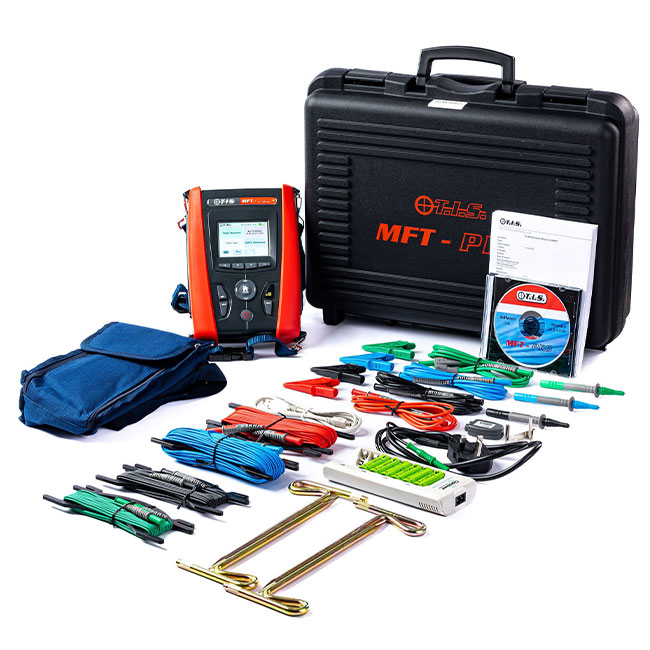
A ground resistance tester (also known as an earth resistance tester) is an instrument which determines the adequacy of a grounding system in an electrical circuit, in terms of its resistance.
‘Earthing’ or ‘Grounding’ in electrical terms is the intentional connection to ground from a circuit conductor via a ground electrode placed in the earth. Fault currents can occur in an electrical system, and when this happens fault currents need a path to ground through a properly designed grounding system. If this doesn’t happen, fault currents will find an unintended path, which could include directly to a person in contact with the electrical system. This can perhaps be better explained by looking at rainwater coming off a roof. If the property has no guttering, the rainwater could find a path into the property through the walls or roof, and cause damage to the internal and external structure, but if there is guttering and downpipes it will find a safe path to the drains where it will disperse. So a good grounding system acts as the guttering and pipework.
What is ground resistance?
The resistance of an object, in this case soil or earth, is the measure of the opposition to current flow in an electrical circuit. So electrical resistance is a force that counteracts the flow of current. Resistance is measured in ohms and when measuring ground resistance in a grounding system, we want the result to be zero, or as close to it as possible, to demonstrate that there is no resistance and fault currents are flowing freely to ground as they should do. Some industries do allow a small resistance in a circuit, such as up to 5.0 ohms.
So ground resistance is the resistance between a grounding electrode and the earth itself, and is measured by inserting an electrode into the ground. Earth has relatively low resistivity, so a voltage drop occurs near the electrode, which produces the current and enables us to make a ground resistance measurement.
Why do we need to test ground resistance?
Effective grounding will avoid the risk of electric shock to a person in contact with an item, if a fault occurs. So safety is the primary function of a ground resistance tester. However, grounding is not just carried out for safety reasons, it also prevents damage to a device or equipment, instrumentation errors and distortion, power factor problems and also improves the reliability of equipment.
We need to measure the ground resistance because the content of soils can change over time in terms of moisture content, salt content and temperature, and this can start to degrade the ground rods and their connections. This means that ground resistance may have been zero or very low when the ground rods were first installed, but the resistance may increase over time as the rods are eaten away and corroded.
Ultimately, regular ground resistance testing is an essential safety measure, but will also help to reduce costs such as repairs, replacement and downtime due to electrical fires. So ground resistance testing should be carried out periodically – usually at least on an annual basis – as part of a standard planned, preventive maintenance schedule, and any increase in resistance that is found should be investigated.
How does ground resistance testing work?
A ground resistance tester, also known as an earth resistance tester, is a meter which generates an electrical current and supplies it to the measuring electrodes to mimic the fault current which could occur in a circuit. The potential difference between the two electrodes gives us the reading we need to verify the earth’s resistance at that point. You could also use the TIS MFTPRO+ multi-function tester supplied by Test Instrument Solutions for this test.
Video Demonstration
Below is a product demonstration video of the TIS MFTPRO+:
Please note that this section is for information purposes only. Anyone using equipment referred to in this section must be suitably qualified and/or experienced within the respective field. If in doubt before use, please consult a qualified electrician or engineer & thoroughly read all instruction booklets.